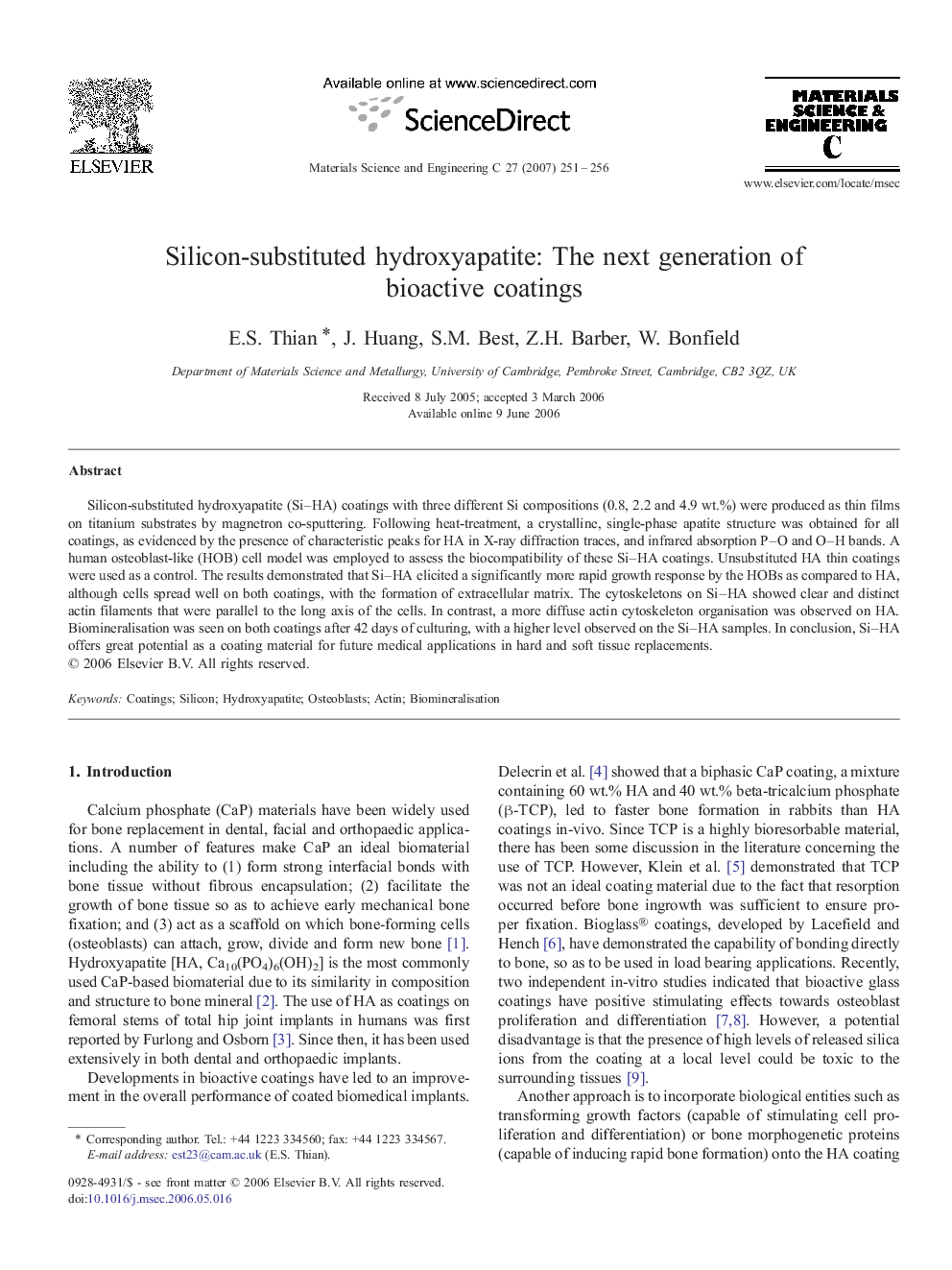| Article ID | Journal | Published Year | Pages | File Type |
|---|---|---|---|---|
| 1431232 | Materials Science and Engineering: C | 2007 | 6 Pages |
Silicon-substituted hydroxyapatite (Si–HA) coatings with three different Si compositions (0.8, 2.2 and 4.9 wt.%) were produced as thin films on titanium substrates by magnetron co-sputtering. Following heat-treatment, a crystalline, single-phase apatite structure was obtained for all coatings, as evidenced by the presence of characteristic peaks for HA in X-ray diffraction traces, and infrared absorption P–O and O–H bands. A human osteoblast-like (HOB) cell model was employed to assess the biocompatibility of these Si–HA coatings. Unsubstituted HA thin coatings were used as a control. The results demonstrated that Si–HA elicited a significantly more rapid growth response by the HOBs as compared to HA, although cells spread well on both coatings, with the formation of extracellular matrix. The cytoskeletons on Si–HA showed clear and distinct actin filaments that were parallel to the long axis of the cells. In contrast, a more diffuse actin cytoskeleton organisation was observed on HA. Biomineralisation was seen on both coatings after 42 days of culturing, with a higher level observed on the Si–HA samples. In conclusion, Si–HA offers great potential as a coating material for future medical applications in hard and soft tissue replacements.
